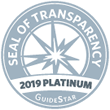
Clinical Thyroidology for the Public summarizes selected research studies discussed in the previous month’s issue of Clinical Thyroidology, an official publication of the American Thyroid Association. Editor-in-chief, Alan Farwell, MD, FACE
Volume 17 Issue 9
Available in pdf format for saving and printing and Web page format for viewing online
PDF Format for Saving and Printing
Clinical Thyroidology for the Public Volume 17 Issue 9 (PDF file, 2.47 MB)
TABLE OF CONTENTS – Web Format
THYROID CANCER
How scared are we of Thyroid Cancer?
Patients with thyroid cancer experience fear similar to patients with more aggressive cancers, even though thyroid cancer usually has a very good outlook and has a good chance of being treated successfully. There hasn’t been a study specifically focusing on fear related to thyroid cancer in the U.S. population. The researchers designed this study to find out how common this fear is among patients with thyroid cancer in the US and identify factors that might be contributing to higher levels of fear.
Taylor SR et al. Assessing Fear of thyroid cancer in the general U.S. population: A cross-sectional study. Thyroid 2024;34(2):234-242; doi: 10.1089/thy.2023.0479. PMID: 38115606.
THYROID CANCER
Can thyroid nodules known to be cancerous, or that are suspected to be cancerous, be safely watched over time instead of being removed with surgery?
Some doctors are now recommending watching thyroid cancers <1 cm over time with ultrasound imaging instead of surgery, called active surveillance. Because most of these small cancers do not grow, or show evidence of trying to spread out of the thyroid over time, many people who have these small cancers might be able to avoid thyroid surgery. This study examined the results of active surveillance with nodules >1 cm that are either cancerous or suspicious for cancer.
Altshuler B et al. Non-operative, active surveillance of larger malignant and suspicious thyroid nodules. J Clin Endocrinol Metab. Epub 2024 Feb 13:dgae082. doi: 10.1210/clinem/ dgae082. PMID: 38349208.
THYROID CANCER
Is radiofrequency ablation superior to surgery for management of low-risk multifocal papillary thyroid microcarcinoma?
Because of the excellent prognosis, the approach to the management of papillary microcarcinoma has shifted to deferring surgery. Radiofrequency ablation (RFA) is one way of treating thyroid cancer without surgery. In this study, the researchers evaluate RFA as an option to treat papillary microcarcinoma as an alternative to surgery.
Yan L et al Five-year outcome between radiofrequency ablation vs surgery for unilateral multifocal papillary thyroid microcarcinoma. J Clin Endocrinol Metab 2023;108(12):3230-3238; doi: 10.1210/clinem/dgad360. PMID: 37318878.
THYROID NODULES
Can AI help us to standardize ultrasound classification of thyroid nodules?
Ultrasound is the most common technique used to distinguish which nodules require further evaluation with biopsy or surgery and which can be watched. Features of the ultrasound images can be used to determine the risk that the nodule is a cancer and decide which should be biopsied. This study was performed to evaluate a specific artificial intelligence decision-support system to determine if this would improve the diagnostic accuracy and consistency among different readers.
Fernández Velasco P et al. Clinical evaluation of an artificial intelligence-based decision support system for the diagnosis and American College of Radiology Thyroid Imaging Reporting and Data System classification of thyroid nodules. Thyroid. 2024;34(4):510-518; doi: 10.1089/thy.2023.0603. PMID: 38368560.
THYROID AND PREGNANCY
Does levothyroxine treatment for subclinical hypothyroidism in pregnancy decrease risk of pregnancy loss?
The most common type of thyroid abnormalities in pregnancy is subclinical hypothyroidism, a mild form of low thyroid hormone levels where the TSH level is high but the FT4 level is normal. Although subclinical hypothyroidism has been linked adverse pregnancy outcomes such as miscarriage and preterm delivery, it is not clear whether treatment with levothyroxine is always helpful. The authors of this study investigated possible impact of levothyroxine treatment of subclinical hypothyroidism in pregnancy divided into different TPOAb status and TSH levels.
Gao S et al. Levothyroxine treatment in pregnant women with thyroid stimulating hormone levels ranging between 2.5 and 10 mIU/L: A propensity score matched analysis. Thyroid Epub 2024 Apr 26; doi: 10.1089/thy.2023.0662. PMID: 38666684.
THYROID EYE DISEASE
Teprotumumab (TempezzaTM) and thyroid eye disease
Thyroid Eye Disease (TED) is caused by inflammation of the eyes that can also lead to enlargement of the muscles that control eye movements and cause eye bulging (proptosis), eye swelling and double vision. The game changer in the treatment of TED has been a drug known as Teprotumumab (TempezzaTM) which blocks receptors in the eye muscles that are associated with inflammation. This study sought to determine if Teprotumumab would be beneficial to patients with chronic TED without evidence of active ongoing inflammation.
Douglas RS, Couch S, Wester ST, et al. Efficacy and safety of teprotumumab in patients with thyroid eye disease of long duration and low disease activity. J Clin Endocrinol Metab 2023;109(1):25-35; doi: 10.1210/clinem/dgad637. PMID: 37925673.



